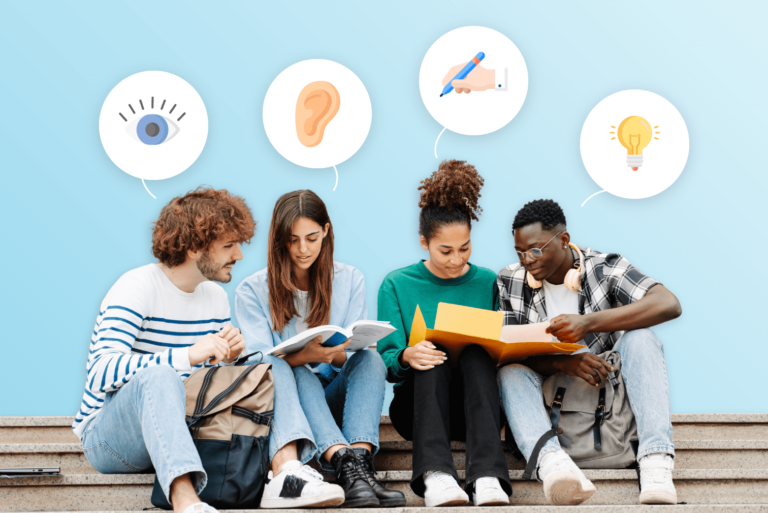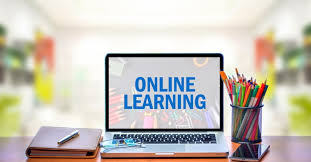
Technology
In the past decade, technology has revolutionized nearly every aspect of our lives, and education is no exception. From digital classrooms to interactive tools, the way students learn, teachers teach, and institutions operate is being profoundly reshaped by technological innovations. As we look toward the future, it’s clear that technology will continue to drive change, offering new opportunities for personalized, immersive, and accessible learning experiences.
In this article, we will explore how technology is shaping the future of education, the challenges and opportunities it presents, and what this means for students, educators, and the education system as a whole.
1. The Rise of Online and Hybrid Learning

Breaking Down Geographical Barriers
The advent of online learning platforms has made education more accessible than ever. With high-speed internet and a variety of platforms offering courses, students no longer have to be physically present in a classroom to receive a world-class education. This shift has not only made learning more flexible but also opened doors for students from remote or underserved areas to access education they previously couldn’t.
- Online Learning Platforms: Platforms like Coursera, edX, and Udemy are offering students a wide range of courses, from foundational knowledge to specialized subjects.
- Hybrid Learning: Combining online and in-person learning, hybrid models allow students to benefit from the flexibility of online education while maintaining the social interaction and hands-on experience of traditional classrooms.
2. Artificial Intelligence and Personalized Learning
Tailoring Education to Individual Needs
Artificial intelligence (AI) is playing a pivotal role in transforming education by enabling personalized learning experiences. AI-powered systems can analyze a student’s learning style, progress, and preferences, and adapt content to meet their specific needs.
- Adaptive Learning Platforms: These platforms use AI algorithms to adjust the difficulty and style of lessons based on student performance, providing a custom-tailored education for each individual.
- Automated Feedback and Grading: AI can provide immediate feedback to students, allowing them to track their progress in real-time. This not only helps students learn faster but also reduces the burden on teachers.
- Virtual Tutors: AI-powered virtual tutors are available 24/7, helping students with homework, reviewing concepts, and providing additional explanations for difficult topics.
3. Augmented Reality (AR) and Virtual Reality (VR) in Education
Immersive Learning Experiences
AR and VR are rapidly gaining ground in education as tools for creating immersive, hands-on learning environments. These technologies enable students to interact with the material in a way that was once unimaginable.
- Virtual Field Trips: VR can take students on virtual field trips to places they may never physically visit, such as ancient ruins, space stations, or the human circulatory system, enhancing their understanding through experience.
- Simulations and Practice Labs: In fields such as medicine, engineering, and science, VR allows students to engage in realistic simulations and practice without the risks and costs associated with real-world environments.
- Augmented Reality: AR can overlay digital information on the real world, allowing students to engage with interactive educational content directly through their mobile devices or AR glasses.
4. Gamification and Interactive Learning
Making Learning Engaging and Fun
Gamification uses game elements such as points, badges, and leaderboards to enhance learning experiences and motivate students. By integrating game mechanics into education, technology helps make learning more engaging and enjoyable, particularly for younger learners.
- Game-Based Learning: Platforms like Kahoot and Quizlet are helping students learn by turning quizzes and challenges into games, which makes studying feel more like play.
- Educational Games: Games like Minecraft Education Edition and SimCityEDU allow students to explore subjects like math, history, and urban planning through a fun and interactive approach.
- Interactive Assessments: Instead of traditional tests, students can complete interactive challenges and problem-solving tasks, making assessments more engaging and dynamic.
5. The Power of Data Analytics in Education
Tracking Student Performance for Better Outcomes
Data analytics is transforming education by providing teachers and institutions with valuable insights into student performance, learning patterns, and behavior. This data-driven approach helps educators identify trends, personalize instruction, and improve learning outcomes.
- Learning Analytics: Tools like Google Classroom and Edmodo track student progress, participation, and areas of improvement, enabling teachers to adjust their approach accordingly.
- Predictive Analytics: By analyzing data over time, predictive models can forecast which students may need additional help or intervention, allowing teachers to provide targeted support.
- Student-Centered Insights: With data analytics, students themselves can track their learning journey, set goals, and receive feedback, making them more active participants in their education.
6. The Growth of EdTech Startups
Innovative Solutions for Modern Education
The EdTech sector has seen explosive growth in recent years, with startups developing innovative solutions that tackle various aspects of education. From learning management systems to AI-powered tutoring services, EdTech is making education more engaging, accessible, and effective.
- Learning Management Systems (LMS): Platforms like Canvas, Blackboard, and Moodle are revolutionizing the way courses are designed and delivered, allowing teachers to manage course materials, track progress, and interact with students online.
- Skill Development Platforms: Companies like LinkedIn Learning and Skillshare provide professional development courses to help individuals learn new skills and advance their careers.
- Collaborative Learning Tools: Tools like Google Drive and Microsoft Teams enable students to collaborate on projects, share resources, and communicate in real-time, fostering a more interactive and collaborative learning environment.
7. The Digital Divide: Challenges and Opportunities
Ensuring Equal Access to Technology
While technology offers immense benefits for education, it also presents challenges, especially in terms of equitable access. Students in lower-income areas or rural locations may face difficulties in accessing the necessary devices or internet connections to participate in online learning.
- Improving Infrastructure: Governments and educational institutions are working to improve internet access and provide affordable devices to students in underserved communities.
- Bridging the Gap: Initiatives like mobile learning platforms and offline access to content are helping to ensure that education remains accessible even for students in remote or underprivileged areas.
8. The Future of Learning: What’s Next?
Beyond 2025
As we look ahead to the next decade, the role of technology in education will only continue to grow. Emerging technologies such as 5G, blockchain, and even advanced AI will further expand the possibilities of education, making it more interactive, efficient, and globally accessible.
- Blockchain for Education: Blockchain technology could potentially revolutionize credentialing and certification, making it easier for students to prove their qualifications and for employers to verify their skills.
- AI-Driven Curriculum Design: In the future, AI could be used to design personalized curricula based on a student’s learning style, interests, and career goals.
- Global Classrooms: With advancements in virtual reality and communication technologies, the classroom could become a truly global experience, where students from different parts of the world learn together in a shared digital environment.
also read: Transformative Learning Methods: A New Era of Education
Conclusion
Technology is not just transforming education—it’s completely reimagining it. From online learning platforms to immersive AR/VR experiences, the future of education is one where students can learn anytime, anywhere, and at their own pace. While challenges like the digital divide remain, the opportunities presented by these technological advancements are vast and exciting. As we continue to innovate and expand the possibilities of education, the future looks bright for learners of all ages, backgrounds, and locations.



